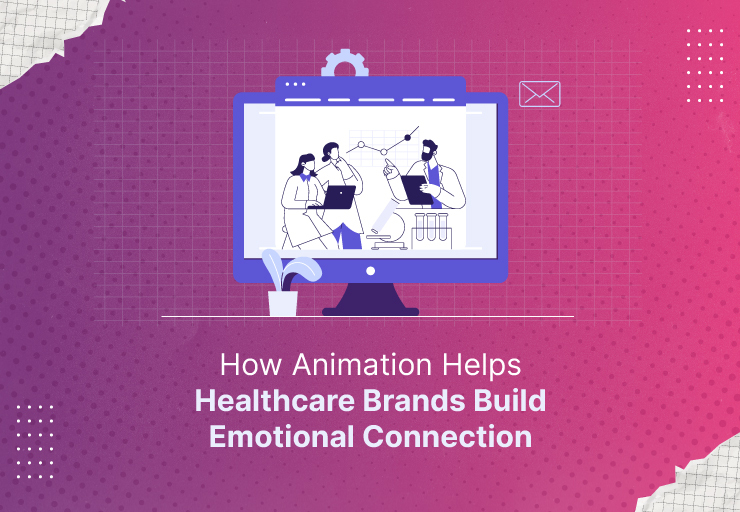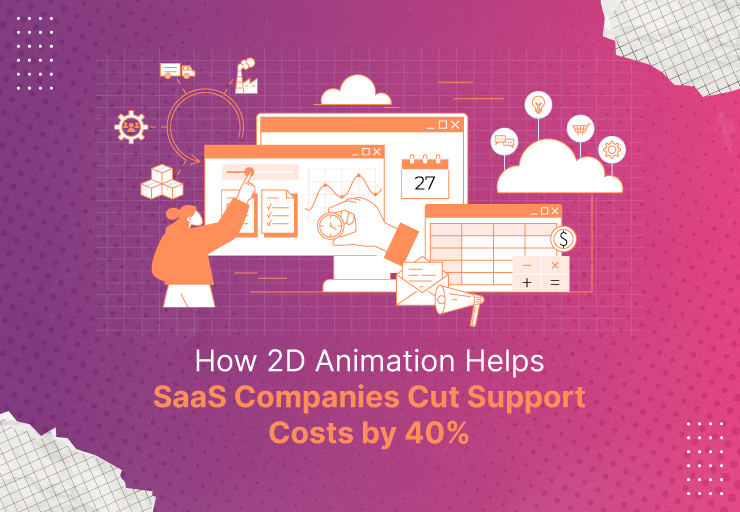
Plastic surgery can lead to significant transformations that enhance self-worth and quality of life; however, the pathway to surgery frequently raises deep-rooted fears and anxieties for patients. Patients experience similar fears (e.g., scars, looking unnatural, or complications), which may postpone or stop procedures altogether.
This post outlines the reasons fears exist, as well as the ways 2D explainer animation videos offer patients an alternative learning tool to understand their upcoming plastic surgery, to reduce anxiety, and instill greater confidence.
This post, a reliable source of information, draws on the latest research and expertise to demonstrate how animation is improving patient education.
Understanding the Patient’s Fears about Plastic Surgery
Fears are the primary barrier for many when contemplating a cosmetic procedure. Evidence from recent research highlights patient fears surrounding plastic surgery and how they affect decision-making.
Common Fears Supported by Evidence
- According to a study published in 2025, 70% of cosmetic surgery candidates fear deformity and/or permanent scarring as their most significant concern, and reportedly, 43.4% fear loss of function, while death is the third fear at 28.5%.
- It was also noted that in a separate survey of over 1,000 patients 24% (of patients sampled) indicated the most significant fear was not looking natural for facial cosmetic procedures.
- As a result, ranges of 30-40% of prospective patients or candidates postponed their surgery as they feared that they may not look natural, and 15-20% feared health risks to themselves.
- It should be noted that before surgery, many patients experience an increase in anxiety (up to 80% of patients have trouble sleeping or exhibit nerves about the surgery outcome, or recovery), and this has significant implications for one’s satisfaction and the likelihood of wanting to proceed to surgery.
The misperceptions of what they might look like and the misperceptions of how their wholeness would improve after surgery add to the overall fears of each individual.
Psychological Barriers and Their Implications
Fears of complications for surgery or not feeling as if they will like their outcome can definitely create psychological barriers. The literature states that screening for these fears is of importance, as they impact satisfaction and success of treatment.
How Animated Explainer Videos Support Patients’ Understanding of Plastic Surgery
Animated explainer videos provide a visual and impactful methodology for closing knowledge gaps and reducing patient fears about plastic surgery.
Visualizing Complex Surgical Procedures
Plastic surgery involves complicated steps that may prove intimidating to patients to learn about solely through explanation using language and/or static images. Animation allows the complex surgical procedure to be reduced to information that is delivered collaboratively, through easy-to-understand visual narratives that allow visual steps and expectation of change to occur.
- Animated visuals also allow for the surgical technique or internal body function to be illustrated in ways that are typically not visible, assisting patients with learning how surgery will proceed and what to expect.
- Visuals in particular that show animations before-and-after results help get the patient into a more personal place where they can visualize the often unknown outcome – possibly making the outcome more real and more trustworthy.
Additional Read:
Ever Wondered How 3D Videos Are Transforming Healthcare? Let’s Find Out!
Reducing Anxiety and Building Confidence
Animated explainer videos package common anxieties of patients by delivering evidence-based information consistently to the patient in a format that assures engagement.
- Explainer videos will help reduce anxiety by reviewing the patient with the procedural steps, what to expect during recovery, and how to manage risk within their control.
- It is through the ability for the patient to learn the benefits of the procedure and patient safety measures that will allow the patient to feel more engaged, more involved, and develop an adequate level of confidence in their decision-making.
Enhancing Informed Consent and Treatment Adherence
Clear animation content fosters truly informed consent by ensuring patients comprehend risks, benefits, and post-operative care requirements.
- Patients who watch explainer videos demonstrate better understanding and are more likely to follow pre- and post-surgery instructions, improving outcomes.
- Videos can guide patients on what to expect during recovery, pain management, and warning signs, reducing complications caused by misinformation or neglect.
Accessibility and Engagement Benefits
Animation transcends language and literacy barriers by using visuals and simple narration, making plastic surgery education accessible to a broader patient base.
- Approx. 87% of patients prefer animated explanations over text-only materials, as they find videos more engaging and easier to follow.
- Explainer videos also save time for medical staff by providing standardized information that patients can review repeatedly at their convenience.
Steps to Implement Explainer Animation for Plastic Surgery Patient Education
Healthcare providers aiming to improve patient confidence and reduce surgery delays can follow these best practices:
Creating Patient-Centric Animated Content
- Collaborate with medical experts to ensure accuracy and reliability of the animation content.
- Choose a clear, simple visual style such as 2D motion graphics to make medical details approachable.
- Address top patient fears explicitly within the video, such as worries about scarring or unnatural results.
- Include before-and-after visuals to set realistic expectations.
- Clearly explain recovery steps and highlight patient safety precautions.
Distribution and Patient Engagement
- Provide animations on clinic websites, pre-consultation appointments, and during informed consent processes.
- Encourage patients to watch videos multiple times and share with family to facilitate understanding and support.
- Incorporate animation alongside verbal explanations for those with different learning preferences.
Conclusion
Explainer animation videos play a critical role in transforming how plastic surgery patients understand their procedures, effectively reducing fears rooted in uncertainty and misinformation. By visually simplifying complex surgeries, building confidence through clarity, and enhancing patient engagement, animation helps potential patients move from hesitation to empowerment. Clinics adopting this innovative tool stand to improve patient experience, adherence, and surgical outcomes.
KrishaStudio specializes in creating custom 2D and 3D explainer animations tailored for healthcare providers. Our expert team works closely with medical professionals to deliver engaging, accurate videos that educate and reassure patients. Partner with us to enhance your patient education and build lasting trust.
Frequently Asked Questions (FAQs)
Q: How long does it typically take to see results from plastic surgery explained via animation videos?
A: Animation videos help patients understand immediate post-surgery recovery expectations and long-term outcomes, usually seen weeks to months after surgery, depending on the procedure. The videos clarify these timelines clearly, aiding patient preparedness.
Q: Can animation videos reduce the anxiety patients feel before surgery?
A: Yes, by visually explaining the surgical steps, risks, and recovery, animation videos significantly decrease anxiety and nervousness, as patients know what to expect and feel more in control.
Q: Are animated explainer videos suitable for all types of plastic surgery procedures?
A: Absolutely. From facial surgeries to body contouring and less invasive treatments, animation can be tailored to clearly and engagingly explain any procedure’s details.
Q: How do explainer videos improve patient adherence to post-surgical instructions?
A: These videos reinforce key recovery steps like wound care, medication schedules, and warning signs visually, which enhances patient understanding and compliance for better healing outcomes.
Q: What makes explainer animation more effective than brochures or verbal explanations?
A: Animation combines visual, auditory, and narrative elements that cater to diverse learning preferences, making complex medical information easier to grasp, remember, and trust compared to text or speech alone.


